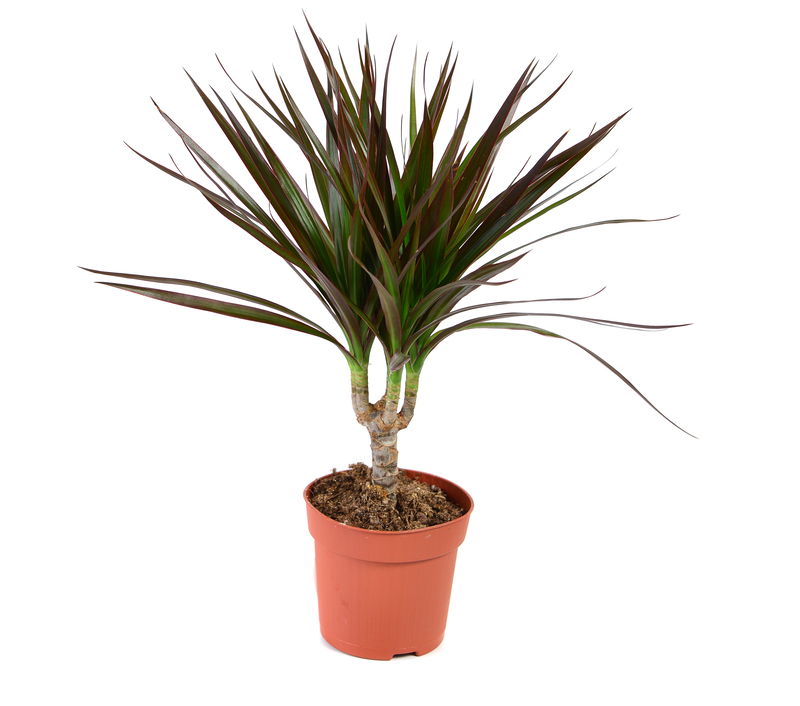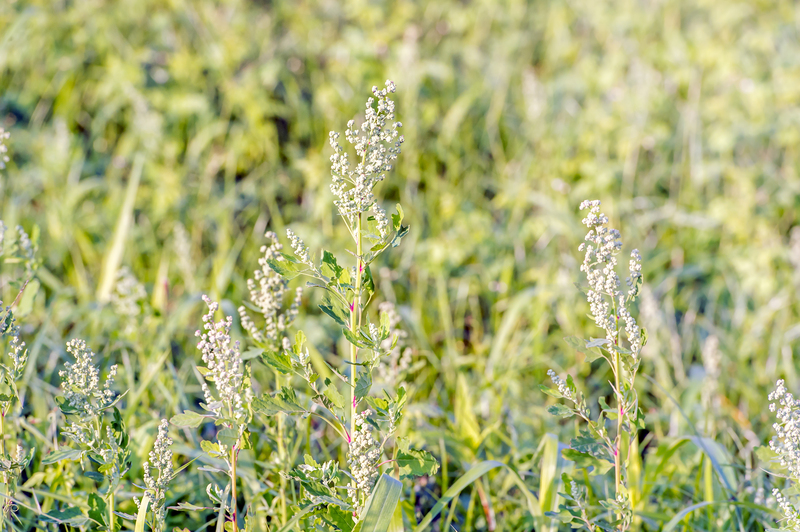Experience the joys of urban farming with container gardening
Posted on 19/08/2025
Experience the Joys of Urban Farming with Container Gardening
Living in the city doesn't mean giving up on the dream of growing your own fresh produce. In fact, urban farming with container gardening is revolutionizing the way city dwellers connect with nature. With limited space and resources, container gardening opens up opportunities for anyone to enjoy greener spaces, healthier lifestyles, and locally grown food right at home.
Why Urban Farming with Containers is Ideal for City Living
City environments often come with a lack of traditional gardening plots, but they offer endless possibilities for innovation. Container gardening in urban settings provides the flexibility, mobility, and accessibility needed to cultivate a stunning urban oasis, no matter how small your space may be. Whether you have a tiny balcony, rooftop, windowsill, or patio, you can reap the rewards of urban container farming.
- Space Efficiency: Containers allow you to utilize vertical and horizontal spaces creatively.
- Mobility: Easily move pots to chase sunlight or avoid extreme weather.
- Pest and Disease Control: Isolated pots reduce the spread of pests and soil-borne diseases.
- Soil Customization: Adapt soil mixture for each plant's specific needs.
- Accessibility: Raise containers to reduce physical strain and increase accessibility for all.
Who Can Benefit from Container Gardening in the City?
Anyone can become an urban gardener! Apartment residents, families, students, and even office workers can enjoy the therapeutic and culinary benefits of growing fruits, vegetables, and herbs in containers. No prior experience or large investments are required--just passion, patience, and a little curiosity.

Getting Started: The Basics of Urban Container Gardening
Learning how to start an urban container garden is a rewarding journey. Here's a step-by-step breakdown to get you growing:
1. Choose the Perfect Containers
- Material Matters: Options include terracotta, ceramic, plastic, metal, and fabric grow bags. Consider durability, insulation, and weight.
- Size and Shape: Match container depth and width to your chosen plants. Deeper pots are better for root vegetables; shallow ones suit herbs and greens.
- Drainage: Drainage holes are essential to prevent waterlogging and root rot.
2. Select the Right Soil Blend
- Go with Potting Mix: Use a high-quality, well-draining potting mix rather than garden soil.
- Add Amendments: Enrich with compost, perlite, or vermiculite for added nutrients, aeration, and moisture retention.
- Organic Options: Choose organic soils if you want to grow chemical-free produce.
3. Decide What to Grow
One of the joys of urban farming through container planting is the sheer variety of plants you can attempt, including:
- Herbs: Basil, mint, parsley, thyme, and cilantro thrive in small containers.
- Greens: Spinach, lettuce, kale, and arugula are fast-growing and cut-and-come-again.
- Tomatoes and Peppers: Perfect for sunny spots and deeper containers.
- Root Crops: Radishes, carrots, and potatoes can grow well in large, deep pots.
- Edible Flowers: Nasturtiums, calendula, and pansies add color and flavor.
4. Position Your Containers Wisely
- Follow the Sun: Most edibles need at least 6 hours of sunlight daily.
- Accessibility: Place containers within easy reach for watering and harvesting.
- Protection: Consider wind breaks or partial shade for sensitive plants during harsh summer months.
5. Watering and Fertilizing
- Consistent Moisture: Container plants dry out faster--check soil moisture daily during hot months.
- Drip Irrigation or Self-Watering: Simple DIY or commercial systems can help reduce maintenance.
- Fertilizer Needs: Use slow-release or liquid organic fertilizers to replenish nutrients regularly.
Creative Urban Farming Ideas with Container Gardening
Ready to take your urban farming experience to the next level? Here are some exciting and practical ideas to maximize your green space:
Vertical Gardens
- Use stacked planters, wall-mounted pockets, or trellises to grow climbing plants like beans, peas, and cucumbers.
- Maximize small balconies and fences by growing vertically.
Windowsill Herb Gardens
- Grow fresh herbs in pots on sunny windowsills for convenient cooking supplies and a fragrant living space.
Rooftop and Balcony Farms
- Convert rooftops or balconies into food-producing zones by grouping containers and using rolling carts for easy movement.
- Ensure structural safety and consider lightweight containers to avoid overloading decks or roofs.
Hydroponic and Aquaponic Containers
- Try water-efficient solutions like hydroponics or aquaponics using simple container setups for maximum yield in minimal space.
Recycled and Upcycled Containers
- Give new life to old buckets, crates, tubs, or even shoes as quirky plant containers, reducing waste and adding personality to your garden.
Key Benefits of Urban Container Farming
- Fresh, Healthy Food: Enjoy pesticide-free, organic produce harvested straight from your home.
- Mental Wellbeing: Gardening reduces stress and promotes relaxation.
- Environmental Impact: Urban farms support biodiversity and help reduce "food miles."
- Educational Opportunities: Teach children and adults alike about plant life cycles and sustainable living.
- Community Building: Shared urban gardens foster connection and collaboration within neighborhoods.
Overcoming Challenges in Container Gardening for Urban Environments
Pest and Disease Management
While containers help minimize some risks, stay vigilant for pests such as aphids, slugs, and spider mites. Use organic controls and companion planting to keep your plants healthy.
Watering Constraints
Urban environments can cause containers to dry out rapidly. Develop a watering schedule or invest in self-watering pots to maintain optimal moisture levels.
Limited Sunlight
Tall surrounding buildings or trees may restrict sunlight. Move containers as needed or select shade-tolerant species such as lettuce, spinach, or mint.
Space Limitations
Every inch counts. Use stackable planters, shelf units, or hanging baskets to maximize growth in tight spaces.
Tips for a Flourishing Urban Container Garden
- Start Small: Don't overwhelm yourself--begin with a few easy-to-grow plants and expand as you gain experience.
- Garden Year-Round: Move containers indoors or use covers to extend your growing season.
- Label Everything: Keep track of a diverse garden by labeling your pots.
- Collect Rainwater: Eco-friendly and cost-effective irrigation for your plants.
- Stay Inspired: Follow urban gardening bloggers or join local urban gardening groups for ongoing support and inspiration.

Boosting Sustainability with Your Urban Container Garden
Urban container gardens are more than just beautiful--they play a key role in making cities greener and more self-sufficient. Here's how you can make your urban farming with containers more sustainable:
- Compost Food Scraps: Create your own soil amendments to reduce kitchen waste.
- Use Recycled Materials: Turn old furniture, bottles, or buckets into unique planters.
- Pollinator-Friendly Plants: Include flowering species that attract bees and butterflies, supporting urban biodiversity.
- Organic Practices: Skip synthetic chemicals and use natural pest controls and fertilizers.
Your Urban Farming Journey Begins Now
Whether you're growing basil on a windowsill or tomatoes on a rooftop, every little bit of urban container gardening adds up--to greener cities, healthier plates, and happier minds. With creativity and care, you can transform any urban nook into a thriving mini-farm.
Are you ready to experience the joys of urban farming with container gardening? Embrace this sustainable trend, and discover just how rewarding city agriculture can be. Start your own urban container garden today and cultivate joy, health, and abundance--right at home!

